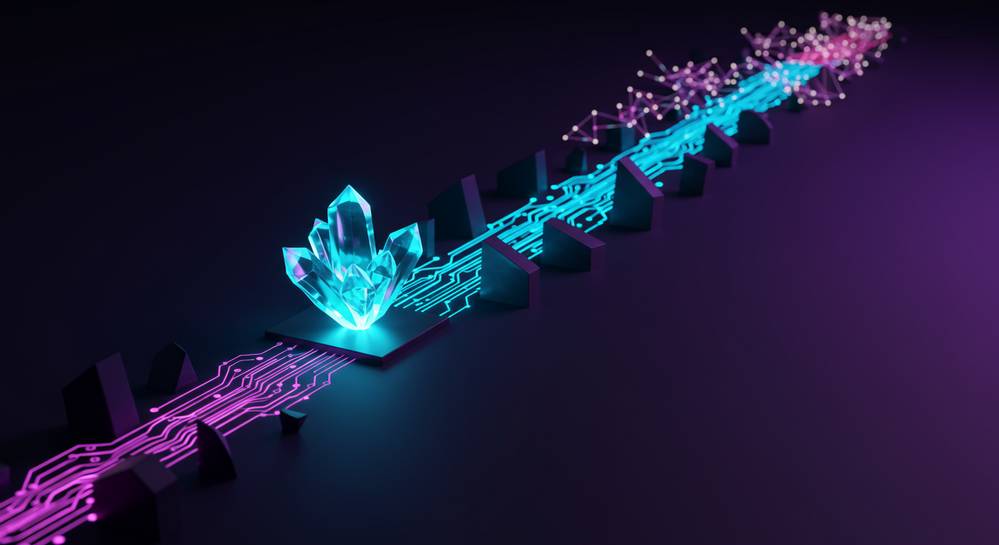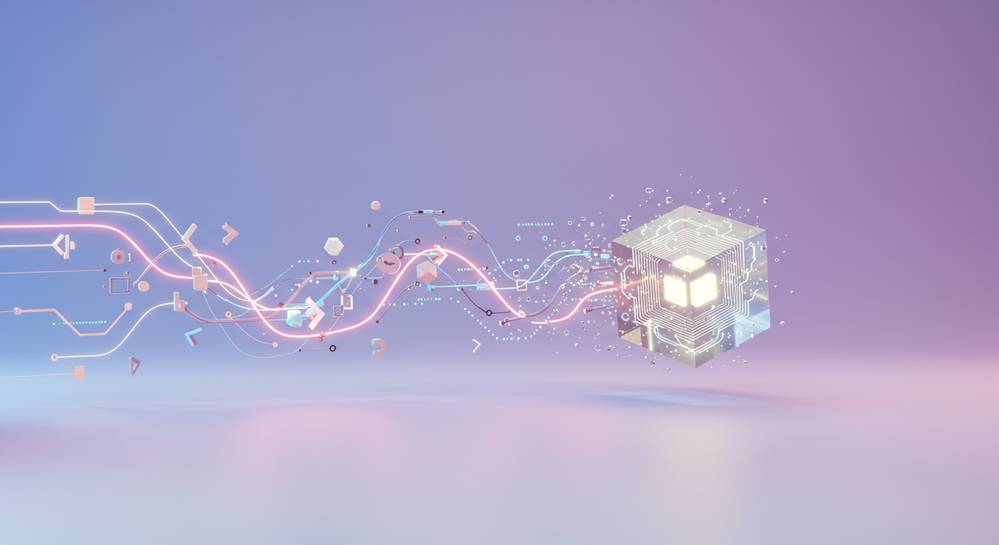Blockchain Hurdles: Navigating the Top Challenges in Disruptive Tech
As blockchain storms the tech scene, a key question persists: What are the challenges of blockchain technology? Speed bumps in scalability and snail-paced transactions sour user experience. Meanwhile, its hunger for energy stirs debate over its environmental bite. Interoperability and security stand as two-faced puzzles, challenging but vital for its growth. Let’s not forget regulatory mazes and compliance puzzles, where every turn could be the wrong one. Dive in as I break down these challenges and explore how we can leapfrog these hurdles in the race to blockchain mastery.
Understanding Scalability and Speed Limitations in Blockchain
The Complexities of Blockchain Scalability Issues
Blockchain faces a big hurdle: it struggles to scale up. When more people join, it can bog down. This is because every transaction must get the network’s nod, causing a jam. Think of it like a single-lane road suddenly packed with cars. The result? Everyone slows down.
It’s not just the volume but the size of the block in the chain. Blocks can only hold so much, and when filled up, new transactions must wait their turn. The problem is, the waiting room isn’t very big, and as the blockchain gets popular, those waits turn into long lines. This jam-up leads to slow service.
Imagine you’re at a big game and everyone tries to buy a hot dog at once. The more people, the longer the wait. Now picture blockchain as the hot dog stand with too many customers and not enough servers. It’s a real patience-tester.
Addressing Slow Transaction Speeds for User Satisfaction
We all hate to wait, whether it’s for a webpage to load or for our coffee at the cafe. And in the blockchain world, nobody likes slow transactions. To fix this, some suggest making the blocks bigger so they can store more. Others say to make transactions lighter, so each block can pack more in.
Some even think the answer lies in a whole new blockchain. They’re working on fresh tech, where blocks hold more and pass on the report faster, just like a speedy train zipping through stations.
But it’s not a one-fix-wins-all deal. As we push blockchain to be quicker, we also have to keep it safe and fair. We’re in it to find a balance that works for all – speedy service that doesn’t skip out on doing things right.
The key is keeping users happy. When they send or get money, it should be zip-zap-zoom quick. Improving speed means no grumbling users and more thumbs-ups for blockchain. After all, we’d all rather cheer for a winning team, and making blockchain fast is like giving it the best sneakers to run with.
Getting blockchain up to speed is like tuning up a car to win the race. It takes a lot of tinkering and trying new things. But when we get it right, it’s going to take us places, fast!

Grappling with Blockchain’s Energy Dilemma
Assessing Blockchain Energy Consumption and Environmental Impact
We face a real challenge with blockchain energy use. Blockchain networks, like the big one Bitcoin runs on, need a lot of power. Huge amounts, in fact. This comes mostly from the process called mining. And guess what? Mining isn’t about picks and shovels. It’s a race where powerful computers solve puzzles to secure blockchain and get rewards.
The problem is this process gobbles up more electricity than some countries! Wild, right? That’s because these puzzle-solving machines need to be on day and night. The electricity to power them often comes from coal or natural gas plants, which really hurts our planet.
People are looking hard at this issue. They’re asking, “Can blockchains be both secure and kinder to the Earth?” Good question! Let’s dig into that.
Proof of Work vs. Proof of Stake: A Sustainable Shift?
Proof of Work (PoW) is like that energy-hungry system I was talking about. But there’s another way called Proof of Stake (PoS). It’s way less power-hungry. Instead of a race with puzzles, PoS is like a lottery system. Owning more of the digital currency? You have a better chance to create the next block and earn the reward.
PoS doesn’t need all those powerful, electricity-drinking computers. That’s great news for Mother Earth. It’s like choosing between a gas-guzzling truck and a low-energy electric car. Both will get you there, but one is way cleaner.
Now, folks argue about security. PoW supporters say it’s battle-tested, while PoS is like the new kid on the block. But PoS has been holding up well so far. Some folks even think it could be safer in the long run.
Okay, but what about the big guns like Bitcoin? They still use PoW and switching them to PoS isn’t like flipping a light switch. It’s a massive overhaul. Many say it’s the future, but it’s not happening overnight.
So, we have a tight spot here. We need blockchains to keep data secure and to be fair for everyone. At the same time, we can’t let our planet take a big hit. We’re all in this together, figuring out solutions. It’s a big puzzle, seems tougher than those the miners solve, but it’s one we’re bent on solving. For our own good and the Earth’s too.
There’s hope on the horizon. New tech and bright minds keep popping up. They offer better ways to keep blockchains doing their thing without leaving such a hefty footprint. We’re talking about a sustainable shift here, and it sure sounds like something to cheer for. We have to get it right – the world’s counting on us!

Ensuring Interoperability and Security in the Blockchain Space
Overcoming Interoperability Between Blockchains
Blockchains are like islands with their own rules. It’s hard for them to talk to each other. We need them to share info smoothly. This means building “bridges” between them. Making different blockchains work together calls for fresh tech and smart plans.
The fix is not simple. We must find common ground between different blockchain systems. Different codes and rules make this hard. We use special tech to link blockchains. This lets them share value and info. It helps users do more across different networks.
Linking blockchains can make new services. It can lower costs too. It’s big for banks and supply chains. But, it’s tricky. Tech must be secure and fit with many systems. Users care a lot about this. They want easy and safe ways to use blockchain.
Safety is key. We don’t want things going wrong when blockchains talk. Bad data mustn’t spread from one to another. We check each step to keep users safe.
So, we’re working hard on ideas that let blockchains work as one. This could change how we handle money, and info, making everything smoother.
Mitigating Blockchain Network Security Risks and Attack Vulnerabilities
Blockchain should be very secure. But sometimes, it faces big risks. Attackers can hit if they get more than half the power in a network. This is the 51% attack.
Point is, if bad guys take over most of a blockchain, they can change stuff. They can stop new transactions or redo old ones. This is bad. We fight this with better design and by keeping the network spread out.
Next worry – quantum computers. They’re super strong and can break some blockchain security. We’re working on new ways to keep blockchains safe from them.
Smart contracts also can have flaws. Hackers might use these to do harm. We work to find and fix these flaws before they cause trouble.
In all, we build stronger, smarter blockchains. This can keep our data safe. We all learn from mistakes and make better security for tomorrow.
We can’t say security is perfect yet. But with each step, we’re making it tougher for attacks to hit us. The goal? A blockchain world where everyone can trust the tech. That’s what we’re going for every day.

Navigating the Regulatory and Compliance Landscape of Blockchain
Tackling Regulatory Challenges and Global Blockchain Regulations
Let’s talk rules—yep, even the exciting world of blockchain has ’em. Rules vary from place to place, making for a tricky path to follow. What’s cool in one country might be a no-go in another. It’s like trying to play a board game where everyone has different rulebooks—confusing, right?
Now, think about blockchain, that awesome tech that lets us trade digital stuff without the need for a middleman. But here’s the hitch: how do you keep it safe and fair for everyone? This is where global blockchain regulations step in. They try to create a level playing field.
Countries worldwide are crafting laws to make blockchain fit into their legal systems. But the tech moves fast, and the law struggles to keep up. Each country has its own take on what’s allowed and what’s not. This can be a real headache for folks creating and using blockchain tech.
Take KYC and AML, short for “Know Your Customer” and “Anti-Money Laundering.” These rules help stop bad guys from doing shady things with money. In blockchain land, this means checking who’s who and where their funds come from. Not so easy when you’re dealing with digital coins and wallets.
We’ve got this thing called “decentralized ledger” – it’s the heart of blockchain, storing all the info without the need for a central boss. But this cool feature makes it tricky for regulators to pin down who’s in charge. Plus, privacy on blockchain platforms is both a blessing and a bane; it’s great for your secrets but tough for keeping the bad stuff out.
Balancing Blockchain Compliance Concerns with Innovation
Here’s the lowdown: doing new things with blockchain is super exciting, but you’ve got to play by the rules—or at least figure out what the rules are. This balance act is like walking a tightrope while juggling. On one hand, you’ve got the push to innovate; on the other, the need to make sure it’s all on the up-and-up.
Blockchain compliance concerns are like guardrails, meant to keep us from veering off course. Sure, they can slow down the wild ride of innovation, but they’re there to protect us too. They ensure that the blockchain highway is safe for all travelers, even if it means going a tad slower.
We all love the idea of public blockchains, where everything’s out in the open. But sometimes, for safety’s sake, you need a private blockchain, kind of like a VIP room where access is limited. And just when you think you’ve got it all figured out, there’s the stuff about data storage limitations and how you keep private things private when you’re sharing a ledger with the whole world.
Alright, let’s get real: this is tough stuff. Blockchain is changing the game, and we’ve all got to learn the new rules. It’s about thinking smart, staying informed, and being ready to adapt. Because when push comes to shove, those who know the ropes will be the ones leading the charge in this digital frontier.
In this post, we’ve tackled some tough blockchain issues. We started by diving into the scalability and speed hurdles that blockchains face and how they affect users. Then, we looked into the energy usage of blockchains, comparing proof of work and proof of stake methods. We also discussed how blockchains can work together better and stay safe from attacks. Finally, we explored the tricky world of blockchain rules and how to keep innovating while following the law.
I believe if we keep pushing for improvements in these areas, blockchain can truly revolutionize our digital landscape. Every step we take towards better scalability, energy efficiency, interoperability, and smart regulation will make blockchain more useful and sustainable for everyone. Let’s keep the conversation going and work for a better blockchain future!
Q&A :
What are the common obstacles in adopting blockchain technology?
Blockchain technology, while revolutionary, faces a variety of adoption challenges. First and foremost, scalability is an issue, as current blockchain solutions can struggle with handling large amounts of transactions quickly. Another significant hurdle is the complexity of blockchain technology, which can be difficult for the average user to understand and thus inhibits widespread adoption. Additionally, regulatory uncertainty and lack of standardization can create a hostile or uncertain environment for blockchain integration.
How does blockchain technology handle security concerns?
The security of blockchain technology is one of its most touted features. It employs cryptographic techniques that make it extremely difficult for hackers to alter the data. However, security concerns such as potential vulnerabilities in smart contracts, 51% attacks (where a user or group controls the majority of mining power), and other forms of cyber-attacks still pose challenges to blockchains. It’s important for blockchain developers to continuously work on enhancing security protocols to address these potential risks.
In what ways does blockchain technology face scalability issues?
Scalability is a known challenge for blockchain technology. Traditional blockchains like Bitcoin and Ethereum can only process a limited number of transactions per second, which leads to bottlenecks and increased transaction costs during peak times. This can be problematic for global adoption. Solutions like layer-two protocols, sharding, and alternative consensus mechanisms like proof-of-stake are being explored to improve blockchain scalability.
What regulatory challenges impact blockchain implementation?
Blockchain technology often operates in a gray area of regulation, facing uncertainty due to its novelty and the speed of its development exceeding that of legislation. Regulators worldwide are trying to catch up with the implications of blockchain, with concerns around legality, tax treatment, and compliance with existing financial regulations being top of mind. These regulatory challenges can deter companies from adopting blockchain technology until clearer guidelines are established.
How is the energy consumption of blockchain networks addressed?
One of the main challenges of some blockchain networks, especially those using proof-of-work (PoW), is their high energy consumption, raising environmental concerns. The community is actively seeking more energy-efficient consensus mechanisms such as proof-of-stake (PoS), that significantly reduce energy use. Furthermore, the use of renewable energy sources and carbon-off-setting initiatives are also strategies being explored to mitigate the ecological impact of blockchain technology’s energy demands.



